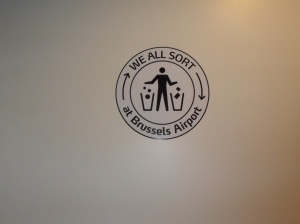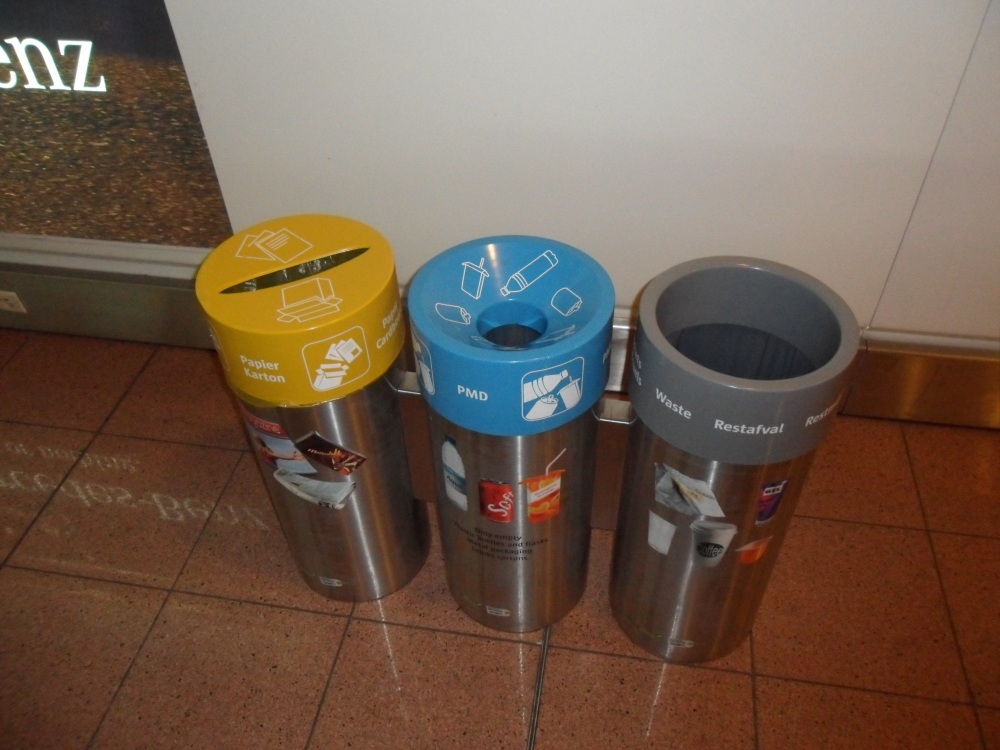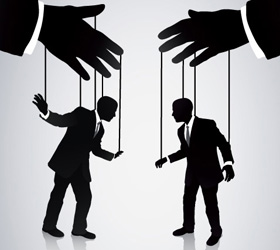An odd title, I know, but it refers back to an article a colleague blogger of mine wrote a little while ago, titled: So when is it legitimate to nudge? In this post, Linda writes a bit about paternalism, and concludes that: ” …perhaps a more accurate debate regarding this critique [nudging being paternalistic] would be the question if paternalism is justified at all? And that’s another debate…”
It is time to have this other debate, I think. The paternalistic aspect of nudging is a thorn in the eye of many critics, of which Robert Sugden is one of the most eloquent and clear. Not only does Sugden write clearly, his critique on nudging makes even the most devout nudger doubt his or her own convictions. And truth be told, the paternalistic tendencies of nudging are indeed a disturbing factor in the whole concept of nudging. It is because of this that I think it is time to have this debate about paternalism, and I will use one of Sugden’s work as inspiration (see the reference list). Mind you, if you do not like to hear critique on nudging, because you are absolutely convinced about its brilliancy, then don’t read this blogpost. It will be a waste of time at best, and depress you at worst. If you are, however, a critical thinker, I invite you to read on, and reflect.
Once upon a time…
Before hearing Sugden speak, let’s reiterate what Thaler and Sunstein wrote in their Nudge book (Thaler & Sunstein, 2008). They define a choice architect as “[having] the responsibility for organizing the context in which people make decisions.” Everything in the context matters, and a decision or behaviour always has a context. In a very recent paper on ethics, Sunstein elaborates on this even further, emphasizing that “When people make decisions, they do so against a background consisting of choice architecture” (Sunstein, 2014). So far there is little to argue against. What is basically said is that no one operates in a void, and I think any sceptic would have a hard time arguing against this. However, the problem of many a critic, and Sugden is among them, is in the conscious role of a choice architect. Again speaking in the words of Thaler and Sunstein’s book: “[they] argue for self-conscious efforts, by institutions in the private sector and also by government, to steer people’s choice in directions that will improve their lives … that will make people better off judged by themselves” (italics in original, p. 5).
Earlier we read that people are pretty incapable of doing so, unless we have full cognitive abilities, complete self control, complete information, attention and time. So, assuming we had all that, then the decision we would make in such a situation, is the one choice architects ought to endorse. So far so good…
Or is it?
Nudges make people better off, as judged by themselves?
How are choice architects to know what people would do if only they had the time to think? If we maintain this ideal, then a lot of nudges that induce pro-social behaviour ought to not be developed in the first place. After all, for any individual it can be rather detrimental to spend time recycling their newspaper, automatically donating money each year to Greenpeace and spend well-earned payments to eco-friendly products. Instead, these people could spend their time working (earning money), or saving money for their own retirement. In fact, many of the default nudges Thaler and Sunstein describe are favouring retirement funds over other expenditures. But isn’t a nudge that makes us more ‘pro-environmental’ or ‘pro-social’ also desirable? Fully rational people think about the future, right? I am not trying to be judgemental here, the point is: it is rather (extremely) difficult to assess what people would judge by themselves.
In fact, even if people are fully capable (time wise and what not), they would probably not be able to make a choice, because at which time frame are we considering? Sure, saving for retirement is nice for me, later on, but saving the planet is nice for my kids, later on, and having a big-ass tv is nice for me and my family, over Christmas! And even if a single individual could make this decision, that is not to say others would come to the same conclusion. Personalities differ, people differ. Some persons might ascribe great value to family occasions, and so the tv is much more important to them than their retirement, or their kids (which they might not even have).
But, Freedom of Choice…
Yes, freedom of choice. Nudges are, in principle, never obstructing people’s freedom of choice. Even if our automatic debit to a good cause is making sure we pay our donation every year, this is on no occasion obstructing our power to choose to do otherwise. Sugden’s main critique is hinged on this, that nudges are assumed to be better than non-libertarian paternalism (strict laws, rules and such) because the freedom of choice demand restricts excesses of paternalism. Sure, good idea, but, in words of Sugden himself: “if that condition [freedom of choice] is weakened to the principle that the costs of paternalism bust be small relative to the benefits, definitions of ‘cost’ and ‘benefit’ are essential.”. (Sugden, 2009, p.370). Essential, yes, and lacking…
We cannot talk about normal costs and benefits, of course, because those terms are linked to having a preference structure (which people don’t, hence the need to nudge them). Rather than this, choice architects will need to develop other ways to ‘divine’ the choices people would otherwise make, if only they had time, cognitive capacity, self-control and perfect information. Still, so Sugden argues and I cannot but agree, these concepts all do not have any strict definitions. In other words, they are quite normative. In even other words, how these are assessed (and consequently which behaviour is seen as the desired outcome) depends very much on the choice architect’s definitions of self-control, capacity, and information needs. So the inevitable conclusion is that the nudge is not the behaviour best, as judged by the person being nudged. It is the behaviour as judged best by the choice architect.
So strangely, while the idea of nudging is borne out of an acknowledgement that we are not homo economicus, it seems that we do still need this homo economicus to figure out the desirable behaviour. Sugden, as well as Thaler and Sunstein, I dare-say, all agree on the notion that this is just not very realistic. Nudges, instead, ought to be used for behaviour for which people really do lack feedback or expertise needed to make sound choices. I agree, in such cases it is definitely nice to have nudges to guide my behaviour. But as for choice architects, these guidelines are not very concrete, are they. What kind of behaviour is to be nudged?
There are obvious behaviours that are wrong, though!
Agreed, certain behaviours have the numbers against them. Smoking, over-eating, drinking (alcohol, mind you) and drunk driving are all examples of behaviour that is pretty risky, if not for an individual, then at least for society. But is this behaviour that is bad, as judged by themselves? Suppose a person makes a very rational cost-benefit analysis, and decides that whatever the costs, smoking still is the thing for him/her?
Statistics may help. We know that for most people, it is good to eat a bit less, and to refrain from smoking. Moreover, it is better for society at large, as the medical costs will be reduced and so more money can be spent on other illnesses or research. Still, this is nudging as judged by use to society, not for the individual. Then there are nudges for the sake of the environment. I completely and wholeheartedly endorse such nudges, myself, by the way. I must come clean there. But in many cases, these nudges are not better as judged by individuals. They are, however, better for the environment (or at least aspire to be).
So judged by whom?
Let us assume that we are not nudging people in a behaviour better as judged by themselves, but for the sake of society at large, of the environment. Assuming this, another important question arises. Who has the expertise to identify which behaviour is better? Some nudges may be evident (there are hardly any costs to nudging people to recycle more, for instance, by adding trash-shaped lids to waste bins) but other nudges may be less so (who is to say that it is good to invest your money in fixed-interest bonds, as Thaler and Sunstein suggest in their book?).
Sugden rounds up with the statement that the concept of nudging seems to not notice, or acknowledge, the lack of precision in criteria required for assessing if nudges are needed, and in which direction they ought to nudge.
But… but… this blog is pro-nudging!
Yes, and what of it? I do hope the reader is, after reading this blog entry, not depressed or convinced of the corruption and perdition of nudging. I think that all previous posts have made it blatantly clear how useful nudging can be. Even the beginning of this article stated as much, and it still holds true, every context nudges, and so it is unavoidable. What this article points out is that there are some flaws (or not even flaws, maybe just small ‘uncomfortabilities’) in the idea of nudging that require our attention. It does not mean that we should throw away nudging altogether, it merely means we should not idolize it. Critical reflection is the way to go.
That said, I think we all acknowledge and agree that nudges have their time and place, and in other places either anarchy or strict regulation is more appropriate. However, urgent questions remain: what is the place of nudges? And how do we nudge people towards behaviour better for them, and who judges what is better? Who, moreover, judges which alternatives are acceptable, in order to maintain and satisfy the need for freedom of choice?
As a final quote for you to think about on your way to an afternoon coffee: Sunstein and Thaler (2003) stated: “Libertarian paternalists want to promote freedom of choice, but they need not seek to provide bad options,…” Mind you, only reasonable options are allowed.
Reference list:
Sugden, R. (2009). On Nudging: A review of Nudge: improving Decisions about Health, Weath and Happiness, by Richard H. Thaler and Cass R. Sunstein, International Journal of the Economics of Business, Vol. 16, No. 3, pp. 365-373
Thaler, R. H., & Sunstein, C. R. (2008). Nudge: Improving Decisions About Health,Wealth, and Happiness. Yale University Press, Boston
Sunstein, C.R. (2014). The Ethics of Nudging. Available at SSRN:http://ssrn.com/abstract=2526341 or http://dx.doi.org/10.2139/ssrn.2526341
Sunstein, C. R., & Thaler, R. H. (2003). Libertarian paternalism is not an oxymoron. The University of Chicago Law Review, 1159-1202.












